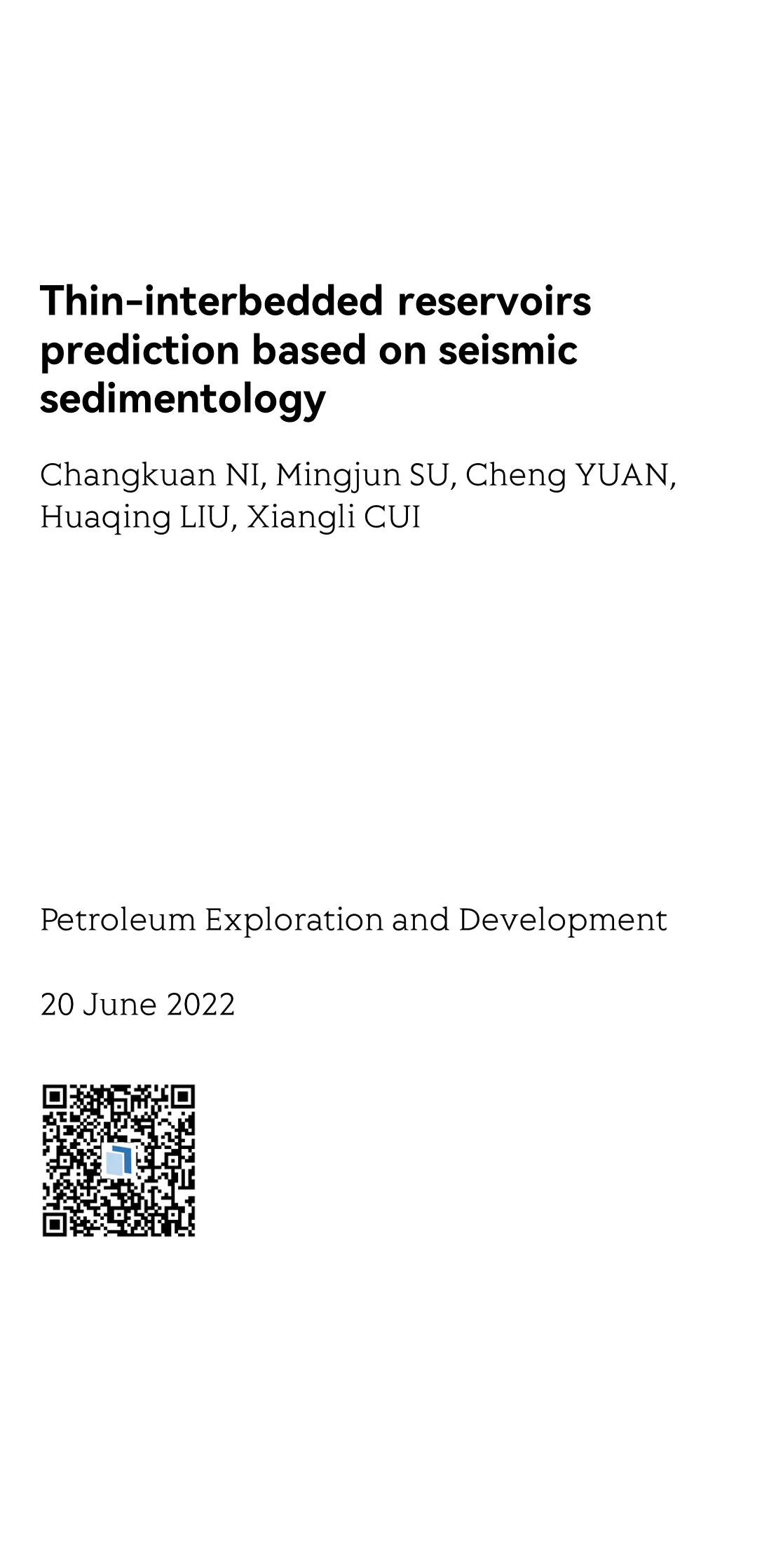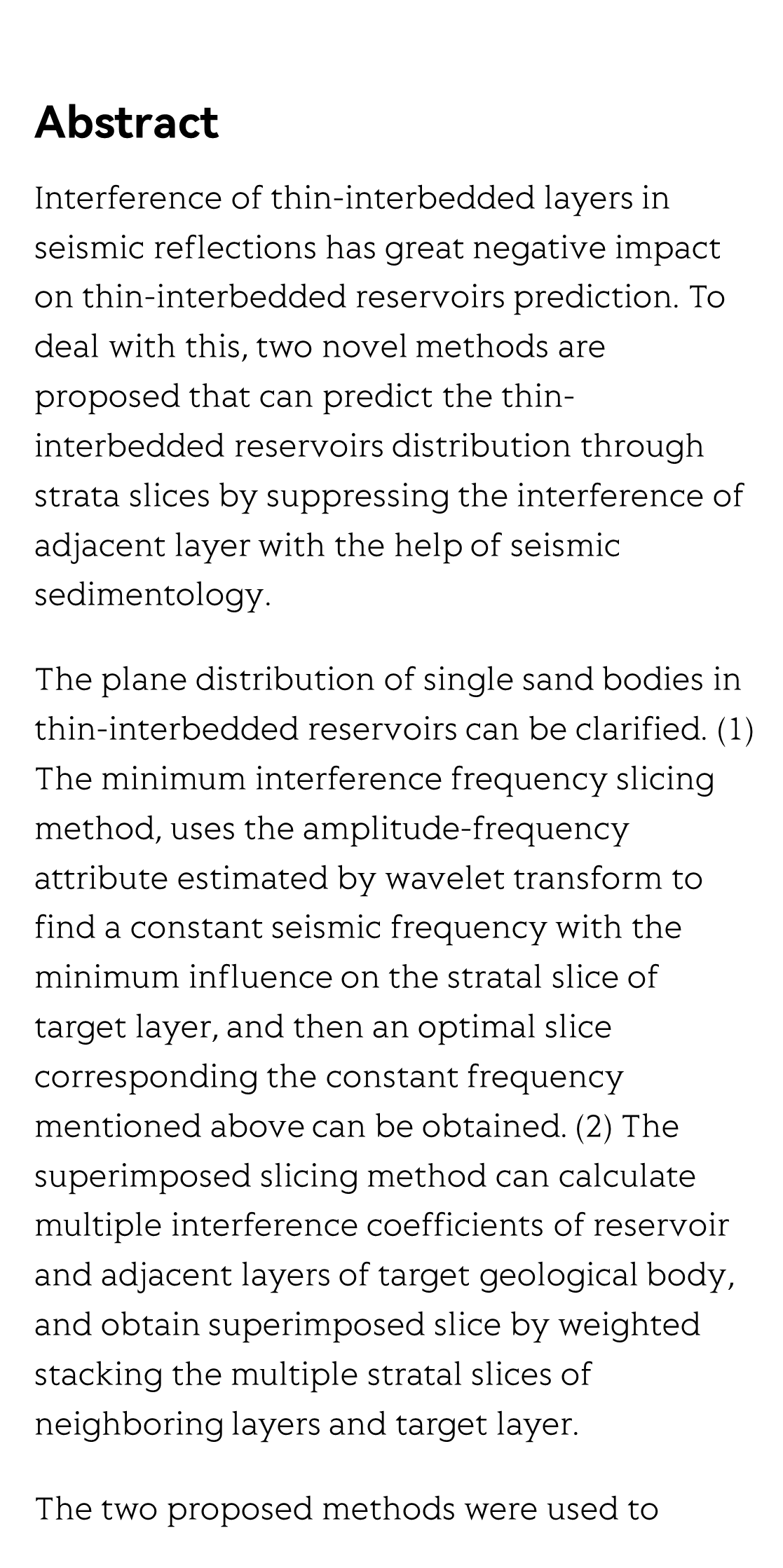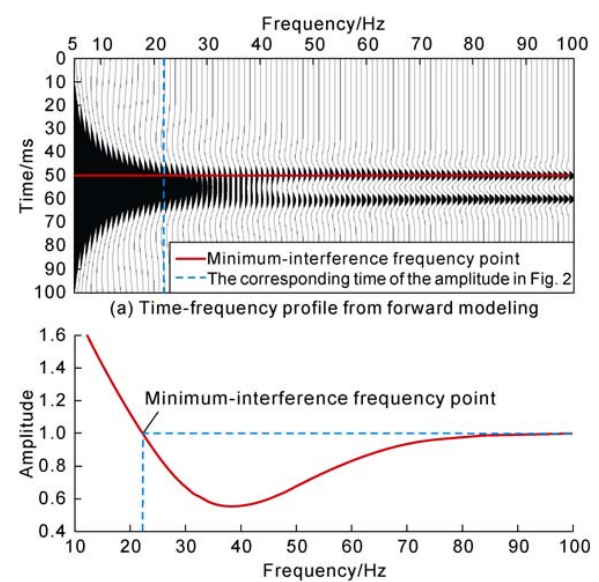(Peer-Reviewed) Thin-interbedded reservoirs prediction based on seismic sedimentology
Changkuan NI 倪长宽 ¹ ², Mingjun SU 苏明军 ¹, Cheng YUAN 袁成 ¹, Huaqing LIU 刘化清 ¹, Xiangli CUI 崔向丽 ¹
¹ Research Institute of Petroleum Exploration and Development-Northwest (NWGI), PetroChina, Lanzhou 730020, China
中国 兰州 中国石油天然气股份有限公司 勘探开发研究院西北分院
² University of Electronic Science and Technology, Chengdu 611731, China
中国 成都 电子科技大学
Abstract
Interference of thin-interbedded layers in seismic reflections has great negative impact on thin-interbedded reservoirs prediction. To deal with this, two novel methods are proposed that can predict the thin-interbedded reservoirs distribution through strata slices by suppressing the interference of adjacent layer with the help of seismic sedimentology.
The plane distribution of single sand bodies in thin-interbedded reservoirs can be clarified. (1) The minimum interference frequency slicing method, uses the amplitude-frequency attribute estimated by wavelet transform to find a constant seismic frequency with the minimum influence on the stratal slice of target layer, and then an optimal slice corresponding the constant frequency mentioned above can be obtained. (2) The superimposed slicing method can calculate multiple interference coefficients of reservoir and adjacent layers of target geological body, and obtain superimposed slice by weighted stacking the multiple stratal slices of neighboring layers and target layer.
The two proposed methods were used to predict the distribution of the target oil layers of 6 m thick in three sets of thin-interbedded reservoirs of Triassic Kelamayi Formation in the Fengnan area of Junggar Basin, Northwestern China. A comparison with drilling data and conventional stratal slices shows that the two methods can predict the distribution of single sand bodies in thin-interbedded reservoirs more accurately.
Flicker minimization in power-saving displays enabled by measurement of difference in flexoelectric coefficients and displacement-current in positive dielectric anisotropy liquid crystals
Junho Jung, HaYoung Jung, GyuRi Choi, HanByeol Park, Sun-Mi Park, Ki-Sun Kwon, Heui-Seok Jin, Dong-Jin Lee, Hoon Jeong, JeongKi Park, Byeong Koo Kim, Seung Hee Lee, MinSu Kim
Opto-Electronic Advances
2025-09-25
Dual-frequency angular-multiplexed fringe projection profilometry with deep learning: breaking hardware limits for ultra-high-speed 3D imaging
Wenwu Chen, Yifan Liu, Shijie Feng, Wei Yin, Jiaming Qian, Yixuan Li, Hang Zhang, Maciej Trusiak, Malgorzata Kujawinska, Qian Chen, Chao Zuo
Opto-Electronic Advances
2025-09-25







